THE "TITLE"
VISITING THE TITLE
Here is a brief description for a visiting the Title.
You access it from the crypt beneath the main altar of the basilica.
Take a tour of the rooms according to the appropriate map.
Room A: on the left side of the entrance there is the memorial plaque of Cardinal Diomede Carafa.
Down there is the rest of a probable drain of the basilica.
On other walls there is a memorial plaque of the Carmelite Brother Elias Barberi and some fragments from nearby excavations and from the floor of the basilica.
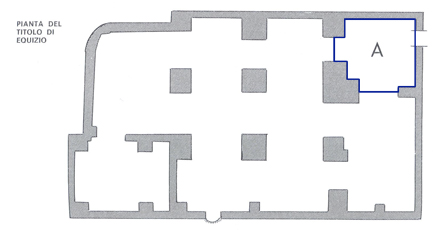
Room B: on the walls there are embedded or hung various fragments: the barriers and other elements of the presbytery (the time of Hadrian I), an ancient ciborium, and the cusp of an Episcopal chair.
There are also fragments of tiles with stamps and a tile with a full stamp and motto "In nomine Dei" of the time of Theodoric (and already belonged to the basilica of Symmachus), a frieze with the Good Shepherd and other Christian symbols (dove, palm, etc…).
The fragment of a fresco (on the vault) represents St. Agnes (the 9th century).
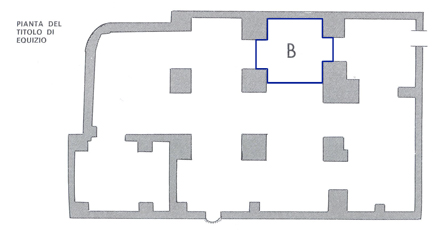
Room C: beyond the font donated by Cardinal Carafa to the basilica and the memorial plaque of Cardinal Pallavicini (in memory of the victory of Sobiewskj) there are traces of the Episcopal chair of the ninth century (on the opposite wall, and before it was in the other area of the title) and the fragment of a fresco of the 9th century representing the great jeweled cross (on the vault).
In the room there is the entrance to the auditorium of the third century that was dug out during the work of 1930.
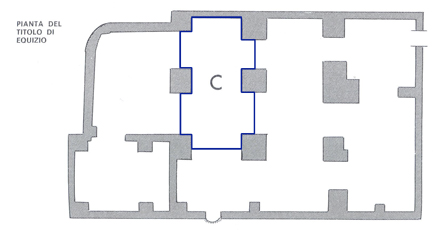
Room D: on the vault there are various remains, including large proportions of decorative pagan frescoes (the 3rd century).
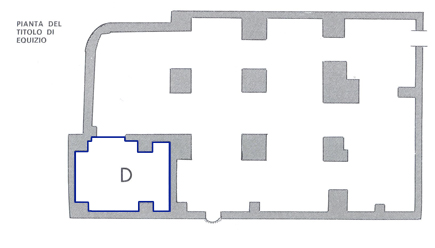
Room E: wide traces of the mosaic pavement of the Roman era (the 3rd century).
In the niche there is a mosaic of the 6th century representing St. Sylvester.
The altar, the decoration of the wall and reproduction of the mosaic (with misinterpretation) are of the 17th century.
To the left of the altar there is a wooden box that contained the remains of Joseph Tommasi of the Counts of Lampedusa.
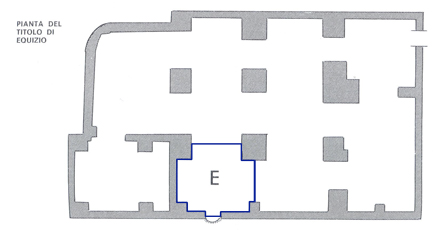
Room F: there is a group of tiles of the time of Theodoric, from the roof of the Basilica; fragments of the mosaic floor and traces of decorative frescoes of the 3rd century.
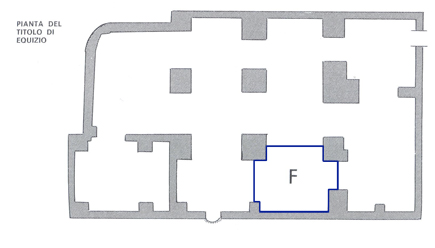
Room G: on the ceiling there is a fragment of the fresco with the Madonna between Saints Agape and Irene (the 9th century).
In addition, there are fragments of old presbytery and some medallions that were outside of the apse of the current basilica.
Here there are altar columns and capitals.
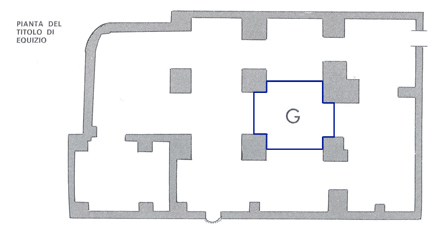
Room H: there are fragments of frescoes from the 9th century, depicting Christ with Saints Peter, Paul, Processus and Martinian(on the vault of the room G), Madonna and some saints (on the vault of the opposite side), the Lamb with seven seals between Saints John the Baptist, John the Evangelist and others (on the arc of the room A).
There are also two drums of columns and a pagan sarcophagus.
On the walls there are the tombstones of Carmelite Superior Generals: Giovanni Battista Rossi († 1577), Christopher Martignoni († 1481), Nicholas Audet († 1562) and Bernardino Landuccio († 1523), and the memorial plaque of Blessed Angelo Paoli († 1720), buried in the basilica.
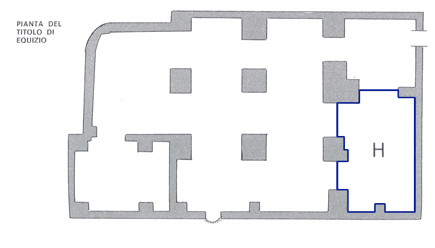
INDICAZIONI BIBLIOGRAFICHE
A. Silvagni, La Basilica di S. Martino, l’oratorio di S. Silvestro e il titolo costantiniano di Equizio, in Archivio della Reale Società Romana di Storia Patria, 34 (1912), 329-437.
R. Vielliard, Les origines du titre de Saint-Martin aux Monts à Rome, Roma-Paris, 1931.
J. B. Ward Perkins, The identification of the “Titulus Equitii”, appendice a Constantine and the origins of the Christian Basilica, in Papers of the British School at Rome, 22 (1954), 89-90.
E. Coccia, Il “Titolo” di Equizio e la basilica dei SS. Silvestro e Martino ai Monti, in Rivista archeologica cristiana, 39 (1963), 235-245.
B. M. Apollonj-Ghetti, Le chiese titolari di S. Silvestro e S. Martino ai Monti, in Rivista di archeologia cristiana, 37 (1961), 271-302.
G. Matthiae, in Chiese di Roma, Roma, 1964, I, 18-19.
R. Krautheimer – S. Corbett, S. Martino ai Monti, in Corpus Basilicarum Christianarum Romae, Città del Vaticano, 1967, III, 87-124.
J. M. Petersen, House-Churches in Rome, in Vigiliae Christianae, 23 (1969), 270-271.
E. Rodriguez-Almeida, Aggiornamento topografico dei colli Oppio, Cispio e Viminale secondo la Forma Urbis Marmorea, in Rendiconti della Pontificia Accademia Romana di Archeologia, 48 (1975-76), 263-278.
R. J. Loernetz, O. P., Actus Sylvestri: genèse d’une légende, in Revue d’histoire ecclésiastique, 70 (Louvain 1975), 426-439.
Altri recenti studi sul titolo di Equizio:
E. Boaga, il complesso titolare di S. Martino ai Monti in Roma, in Dalla chiesa antica alla chiesa moderna, a cura di M. Fois, V. Monachino, F. Litva, Roma 1983, pp. 1-17 (Miscellanea Historiae Pontificiae, vol. 50).
Caecilia Davis-Weyer and Judson J. Emerick, The early seixth-century frescoes at S. Martino ai Monti in Rome, in Romisches Jahrbuch fur Kunstgeschichte, 21 (1984), 1-60.
Taken from elaborate:
THE TITLE OF EQUIZIO AND BASILICA OF ST. MARTINO AI MONTI
edited by Emanuele Boaga
for Basilica Santi Silvestro e Martino ai Monti
Via del Monte Oppio 28-00184 ROME
tel. 06-47.84.701 - fax 06-47.84.70.63
e-mail:
Parish of the Central Sector - Prefecture V – Rione Monti - 1˚Municipality
Presbyterial title: Cardinal Kazimierz Nycz
Entrusted to: Carmelites (O. Carm.)
Current Pastor: Fr. ADRIAN Ghiurca (O. CARM.)








